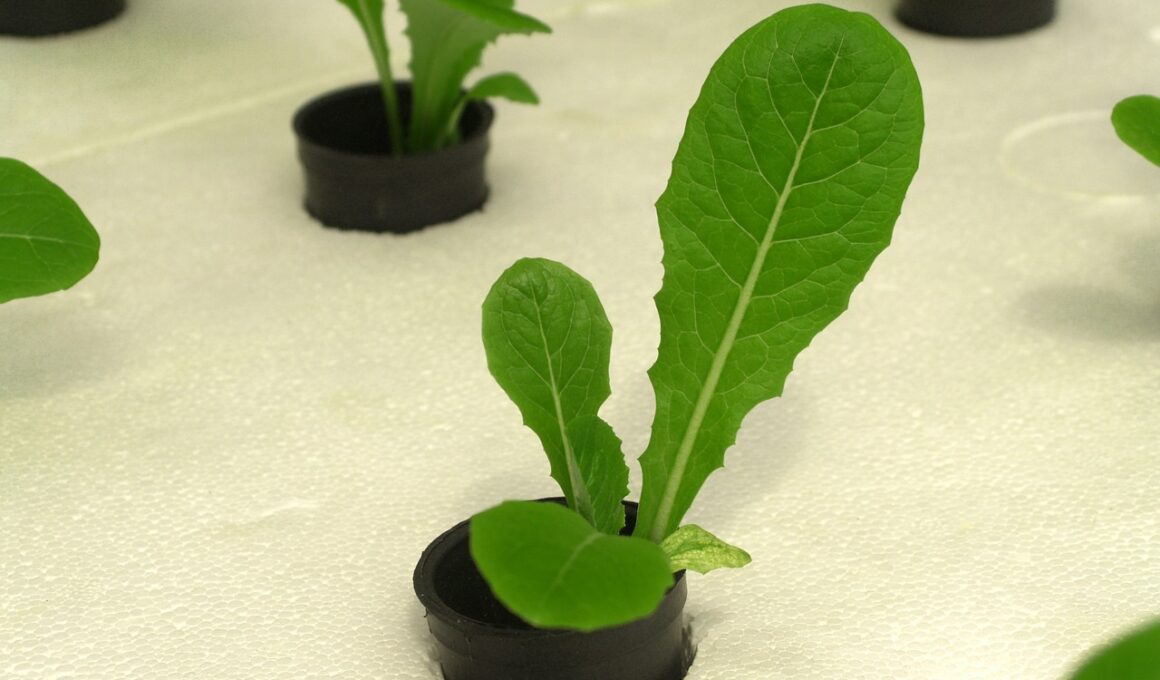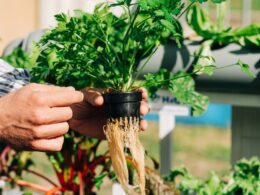Are you interested in growing cucumbers but don’t have a lot of outdoor space or experience in gardening? Hydroponics might be the perfect solution for you.
With hydroponics, you can grow cucumbers indoors or in a small outdoor space without soil, and with minimal effort and maintenance. Hydroponics is a system of growing plants in water that is enriched with nutrients and minerals, instead of in soil. It’s a popular method for growing a variety of crops, including cucumbers.
In this article, we’ll explore the basics of hydroponics, explain how cucumbers can thrive in this environment, and give you tips for setting up your own hydroponic cucumber garden. With the right tools and knowledge, you’ll be able to grow fresh, healthy cucumbers all year-round, without ever leaving your home.
Hydroponics 101: Understanding the Basics
Get ready to dive into the basics of a revolutionary method of growing plants without soil! Hydroponics is a technique of growing plants in nutrient-rich water instead of traditional soil. This method has been around for centuries, but it’s gained popularity in recent years due to its many benefits.
One of the benefits of hydroponics is that it conserves water. In traditional farming methods, plants need to absorb water from the soil, which can lead to waste due to runoff. Hydroponics allows for the precise delivery of water and nutrients to plants, which reduces water waste and lowers water usage by up to 90%.
There are also some common misconceptions about hydroponics. Some people believe that plants grown in this way are less healthy or less flavorful than those grown in soil. However, this is simply not true. In fact, hydroponic plants can be even healthier and more flavorful than traditional soil-grown plants because they receive precisely the nutrients they need to thrive.
In summary, hydroponics is a revolutionary method of growing plants without soil. It offers many benefits, including water conservation and precise nutrient delivery. There are also common misconceptions about hydroponics, such as the idea that hydroponic plants are less healthy or less flavorful than those grown in soil. However, this is simply not true.
Cucumbers and Hydroponics
Crisp and refreshing, these green fruits have found a unique way to thrive without soil. Yes, cucumbers can definitely grow in hydroponics! In fact, hydroponic cucumber yields can often surpass those grown in soil. Here are five things to keep in mind when growing cucumbers in hydroponics:
-
Choose the right cucumber varieties. Some cucumber varieties are better suited for hydroponics than others. Look for varieties that are disease-resistant and have a compact growth habit.
-
Optimize your nutrient solution. Cucumbers require a balanced nutrient solution that contains nitrogen, phosphorus, and potassium. It’s also important to maintain the pH level between 5.5 and 6.5.
-
Provide adequate support. Cucumbers are vining plants and require support to grow upright. You can use trellises, stakes, or cages to provide support.
-
Control the temperature and humidity. Cucumbers prefer temperatures between 70-75°F during the day and 60-65°F at night. Humidity levels should be kept around 60-70%.
-
Monitor for pests and diseases. Just like with soil-grown cucumbers, hydroponic cucumbers can be susceptible to pests and diseases. Regular monitoring and preventative measures can help keep your plants healthy.
When it comes to hydroponic cucumber yields, the results can be impressive. With proper care and attention, hydroponic cucumbers can produce higher yields than those grown in soil. Plus, hydroponics allows for more control over the growing environment, which can lead to healthier plants and better quality produce. Give it a try and see for yourself!
Choosing the Right Hydroponic System
Ready to take your indoor gardening to the next level? To successfully grow cucumbers in hydroponics, you need to choose the right hydroponic system.
One popular option is vertical farming, which allows you to grow plants vertically in a small space. This system is ideal for cucumbers, as they have a climbing habit and need support to grow.
Another option to consider is nutrient film technique (NFT), which involves a shallow tray filled with nutrient-rich water. The roots of the plants are suspended in the water, and a thin layer of nutrient-rich water flows over the roots continuously. This system is perfect for cucumbers, as they need a constant supply of water and nutrients to grow. Plus, the NFT system is easy to set up and maintain, making it ideal for beginners.
No matter which hydroponic system you choose, make sure you provide enough light, water, and nutrients to your cucumbers. With the right system and proper care, you can enjoy a bountiful cucumber harvest all year round.
So, get ready to take your indoor gardening to the next level with the perfect hydroponic system for your needs.
Is Using Epsom Salt Safe for Hydroponically Grown Cucumbers?
Using Epsom salt in hydroponically grown cucumbers can be safe if done in moderation, as it provides essential magnesium and sulfur. However, overusing epsom salt in plants can be harmful, leading to nutrient imbalances and damaging root systems. It’s crucial to follow dosage recommendations and monitor plant health to maintain a balanced nutrient environment.
Nutrients and Lighting
If you want your indoor cucumber garden to flourish, you need to pay attention to the nutrients and lighting you provide. Your hydroponic system should have a pH level between 5.5 and 6.5 to ensure that your cucumber plants can absorb nutrients efficiently.
You can adjust the pH level using pH testing kits and pH adjusting solutions. Keep in mind that if the pH level is too high or too low, your plants won’t be able to take up the nutrients they need, which can lead to stunted growth or even death.
Aside from pH levels, water circulation is also crucial for your cucumber plants to thrive in a hydroponic system. Make sure that your hydroponic system has a good water pump and that the water is circulating continuously.
This ensures that your plants receive enough oxygen and nutrients, and it also helps prevent the growth of algae and bacteria that can harm your plants.
Remember that lighting is also essential for your cucumber plants. Provide your plants with 12-16 hours of light each day, using grow lights if necessary.
Keep the lights at a distance of 12-18 inches from your plants, and adjust the height as your plants grow taller. With the right balance of nutrients, water circulation, and lighting, your cucumber plants will thrive in your hydroponic system and give you a bountiful harvest.
Tips for Growing Cucumbers in Hydroponics
To maximize the potential of your indoor garden, try implementing these tips for cultivating healthy and abundant cucumber plants in your hydroponic system.
First of all, choose the right cucumber varieties for hydroponics. English cucumbers, mini cucumbers, and Persian cucumbers are the most suitable for hydroponics due to their compact size, high yield, and disease resistance. You can also opt for grafted cucumbers, which are known for their vigor and productivity.
Secondly, use proper harvesting techniques to ensure your cucumbers are at their best. Harvesting cucumbers before they’re fully ripe can lead to less flavorful fruits. On the other hand, leaving them on the vine for too long can cause them to become overly large and tough. To determine the ideal time to harvest, look for cues such as size, color, and texture. It’s also important to use sharp pruners or scissors to avoid damaging the plant.
Finally, maintain a consistent and appropriate growing environment for your cucumber plants. Keep the temperature between 75-85°F during the day and 65-75°F at night. Provide them with at least 12 hours of light per day, and make sure the light source isn’t too close or too far from the plants. Also, keep the pH level between 5.8 and 6.5 and monitor nutrient levels regularly.
With these tips in mind, you can enjoy healthy and delicious cucumbers year-round.
Frequently Asked Questions
How long does it take for cucumbers to grow in a hydroponic system?
If you’re wondering how long it takes for cucumbers to grow in a hydroponic system, the answer is typically around 60 days. However, this can vary depending on the specific variety of cucumber and the harvesting techniques used.
To ensure successful growth, it’s important to manage the nutrient solution properly, as cucumbers require a balanced supply of nutrients and water. With the right care and attention, you can expect a bountiful harvest of fresh, flavorful cucumbers that are free from pesticides and other harmful chemicals.
Can you grow other vegetables alongside cucumbers in a hydroponic system?
When it comes to hydroponic gardening, companion planting and crop rotation are essential practices for growing multiple vegetables in the same system.
Companion planting involves planting two or more vegetables that benefit each other in terms of growth and pest control. For example, planting cucumbers alongside tomatoes can help repel insects that harm both plants.
Crop rotation involves changing the location of plants each growing season to prevent nutrient depletion and disease buildup in the soil. By rotating crops, you can grow a variety of vegetables in a hydroponic system, including lettuce, peppers, and herbs.
With the right planning and care, you can increase your yield and create a thriving hydroponic garden.
What are the benefits of growing cucumbers in a hydroponic system compared to traditional soil gardening?
Growing cucumbers in a hydroponic system has many benefits compared to traditional soil gardening.
The first benefit is the increased yield. Hydroponic systems provide optimal conditions for cucumber growth, leading to higher yields.
Additionally, hydroponic systems use less water and nutrients than soil gardening, making them more cost-effective and environmentally friendly.
Another benefit is the ability to control the environment and prevent pests and diseases from affecting the plants. This means that you can grow cucumbers without the use of harmful pesticides.
Overall, growing cucumbers in a hydroponic system offers numerous benefits and a much higher yield when compared to traditional soil gardening.
How often do you need to change the nutrient solution in a hydroponic cucumber system?
Maintaining the nutrient solution in your hydroponic cucumber system is crucial to achieving high yields. You should change the solution every two weeks or when the nutrient levels drop below acceptable levels. This is because the plants absorb the nutrients as they grow, which depletes the solution over time.
Nutrient solution maintenance involves monitoring pH levels, checking for any signs of nutrient deficiencies, and adding the appropriate amount of nutrients to maintain a healthy balance. Proper maintenance will not only ensure the health of your plants but also increase your harvest yield.
Can you reuse the nutrient solution from a previous hydroponic cucumber harvest?
You can reuse the nutrient solution from a previous hydroponic cucumber harvest, and doing so offers several benefits. Reusing the solution reduces waste and increases nutrient solution sustainability. It also saves time and money by eliminating the need to purchase new nutrients.
However, it’s important to note that the solution may not contain all the necessary nutrients for a new crop, and some plants may be more sensitive to imbalances in the solution. To ensure success, it’s recommended to test the solution’s pH and nutrient levels before reusing it and adjust as needed.
Overall, reusing nutrient solutions can be a cost-effective and sustainable practice in hydroponic gardening.
Conclusion
Congratulations! You now know that growing cucumbers in hydroponics is absolutely possible. With the right hydroponic system and nutrient-rich solution, you can grow cucumbers all year round.
Just remember to choose a hydroponic system that suits your needs, and provide your cucumbers with plenty of light and nutrients. With a little bit of care and attention, you’ll be able to enjoy delicious, homegrown cucumbers in no time.
So, go ahead and give it a try – you might just be surprised at how easy and enjoyable it can be!









